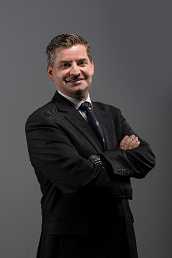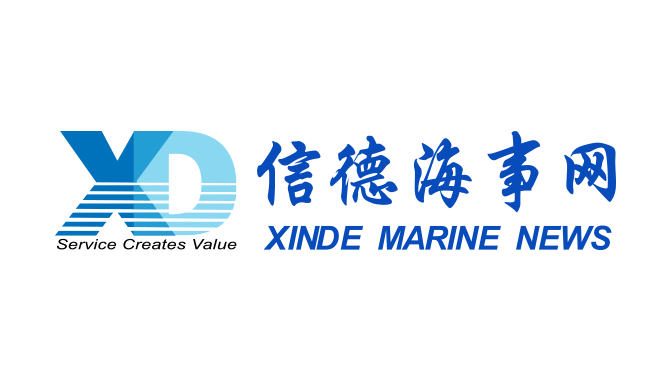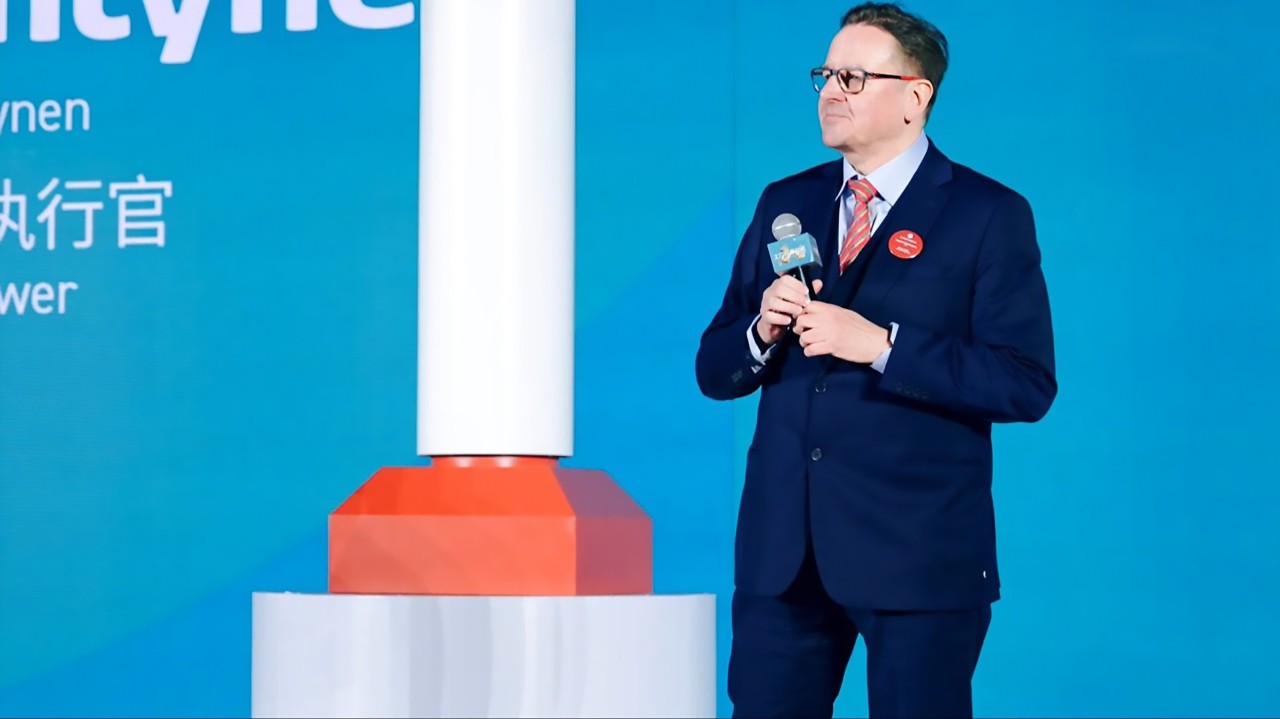
Confronting shipping’s environmental challenges will demand new ways of operating as well as new fuels, according to Roger Holm.
As the clock ticks over on a new decade, a monumental shift is occurring in shipping. For so long the silent enabler of world trade – responsible for moving energy, raw materials and consumer goods around the world as well as connecting coastal communities – the industry is coming under increasing focus as it confronts its impact on the environment and the planet.
Demonstrations outside the London headquarters of shipping’s global regulator the International Maritime Organization (IMO) last year showed that the world is watching. In April 2018 IMO unveiled its initial greenhouse gas reduction strategy, aiming to halve emissions from shipping by 2050. Now it is up to the industry to show that it can rise to those ambitions.
Roger Holm, President of the marine business at Finnish technology company Wärtsilä, notes a clear change in the market’s direction last year. He points to concrete steps tackling the biggest question facing shipping this decade: which fuels and technologies will ships use to reduce and eventually eliminate emissions?
“Last year saw a quite considerable change in how environmental aspects are discussed within the maritime community,” Holm explains. “Shipping is involved in a huge amount of trade and is already the most environmentally friendly way of moving goods. But there is the opportunity to do even better. In 2019 a big part of the industry acknowledged that shipping needs to drive that change itself.”
A prime example is the proposal, unveiled in late 2019, to establish a research trust funded by a US$2 per tonne levy on ship fuel. Earlier in the year, several banks developed ‘The Poseidon Principles’, a set of criteria for financing green ship investments. And throughout the year many projects brought industry stakeholders together to explore how to meet IMO’s targets. In one example, the Getting to Zero coalition, Wärtsilä is among 74 companies in an international cooperation to develop a zero-emission deep-sea merchant ship by 2030.
“The conversation has changed rapidly and I’m sure we will see discussions accelerating,” says Holm. “For me. the dream is that shipping has a ‘green label’ showing that it is highly efficient and environmentally responsible.”
Continuing the conversation will be critical. Central to Wärtsilä’s approach is the view that shipping’s environmental challenges must be solved collectively rather than by each individual company. The vision is of a ‘smart marine ecosystem’, whereby shipping stakeholders work together using cutting-edge technologies to drive inefficiency from the entire logistics chain.
“It’s about much more than the fuel,” says Holm, “it’s about how you connect and collaborate with the whole ecosystem and make it more efficient by getting data moving in a different way.”
The concept of ‘just in time’ sailing highlights this approach. Cargo ships traditionally sail faster than necessary in order not to miss valuable port berthing slots or to avoid contractual penalties, but often end up having to wait at anchor for slots regardless. As ships consume more fuel at higher speeds, and because waiting at anchor means more emissions closer to populated areas, there is a huge environmental and efficiency benefit in cutting waiting time.
Just in time sailing relies on both connectivity and voyage planning technologies to facilitate the exchange of accurate arrival times between ports and ships. Wärtsilä is already working with ship operators to enable just in time sailing through its existing technologies.
Holm says that applying the concept globally today is a challenge due to lack of connectivity as well as varying approaches to data and communications, but he expects the industry to move in this direction. And with fuel efficiencies as well as emissions benefits, there is clear advantage in being an early adopter.
“Looking at data in different segments is where the big opportunity lies to reduce fuel consumption, but it also requires taking down silos in the maritime world and that will be one of the hurdles. To get it to work on a global scale requires quite a lot but that doesn’t prevent us from starting to use these concepts in corners of the maritime world.”
One such corner – if that is an appropriate description for more than 600 vessels – is the fleet of ship manager Anglo Eastern. In November the company signed an agreement to roll out Wärtsilä’s voyage planning and execution, engine performance and fuel efficiency monitoring systems across the fleet. The Fleet Operations Solution (FOS) integrates otherwise separate processes to optimise planning, weather routing, fuel consumption, and speed. This kind of functionality is a pre-requisite of just in time sailing.
“This is a huge step in the direction of connecting the ecosystem and we are proud to do this with one of the major players in the industry,” says Holm. “They have the same thinking as us – to use data to optimise their operations.”
But shipowners cannot maximise the efficiency of shipping on their own. As just-in-time sailing illustrates, ports must also play a role. The communities around ports also have a natural interest in a more profitable, sustainable and safer maritime business. Under the SEA20 initiative, Wärtsilä is organising high-level meetings between port cities to discuss these issues. The first took place in Helsinki in June.
“In big coastal cities the harbour plays a significant role and we believe these cities can be key players to push for broader cooperation in the marine ecosystem,” says Holm.
Using data and an ecosystem approach to optimise operations will help ships use only the fuel they need. But that is just part of the solution to shipping’s environmental challenges. The other element, which has arguably taken a bigger share of the industry discussion, is which fuel ships should use to eliminate emissions. At a time when no carbon-free fuels are available for shipping, there is much discussion about which fuels may emerge. As a market leader in marine engines, Wärtsilä is well placed to assess these fuels as they emerge. But for now, says Holm, the watchword is flexibility.
“No-one knows exactly which way fuels will develop but we will see a greater mix of fuels than we do today,” he says. “That’s where you need fuel flexibility. And here the combustion engine is one of a kind. Today, for example, you have dual-fuel engines running on heavy fuel oil and liquefied natural gas (LNG). In the future it might be that you use a mix of hydrogen and LNG. You will need technology that is as future proof as possible and that can be converted if needed.”
Wärtsilä has supplied dual-fuel engines to the shipping and power generation markets for nearly 30 years, and its engines can all be converted to use many clean fuels, including blends of green ammonia, hydrogen and methanol. But until zero-carbon fuels emerge at scale, one of the best fueling options for ships is a fuel that is already used – LNG.
“We see an uptake of LNG as a fuel in all shipping segments,” confirms Holm. “It’s also a bridge to the future in the sense that LNG will still play a big role in the market in 2050. But using LNG now also enables ship owners to use other new fuels as they emerge, such as synthetic LNG, or to mix fuels like hydrogen with LNG to reduce carbon content.”
The need for flexibility also applies to the other side of equation – improving operations through data. With the rapid pace of development in both data use and fuels, there is a significant risk of selecting the wrong technologies for a vessel that must serve for 20 years or more. Future-proof systems as well as flexible powering are a necessity, says Holm.
“A combustion engine is one part of it. The other thing is to look at how you enable the use of data for your asset to the greatest extent. The vessel you have today and the ones we will have in 10 years will be very different in how they use data as well as the fuel they use. But to get where we need to go, we can’t wait for three years until the path is clearer.”
One example of that rapid pace of change is the drive towards vessel autonomy. Holm explains that the pursuit of greater autonomy is driven by a desire to further optimise operations, rather than reduce crew numbers. One example of this approach is Wärtsilä’s ongoing work with harbour and towage operator PSA Marine in Singapore to develop a smart tugboat that incorporates multiple systems to enhance safety and efficiency.
“For me the heart of this development is optimisation,” he says. “We see it in the car industry already, where data is used to optimise the usage of the battery and the engine in hybrid cars, and to help the driver to drive safely. It is similar in shipping and while there are segments where unmanned operation will be a target – in some coastal shipping for example - we see increased optimisation as the main goal of greater autonomy.”
Reducing shipping’s environmental impact will involve a combination of operational optimisation, improved connectivity and fuel choice. Facing such a complex challenge, it is little surprise that the industry is looking towards technology providers like Wärtsilä to take some responsibility for scouting the way ahead.
“There are few players that can look at this in a broader perspective,” says Holm. “We are one. In fact, this fits our purpose of enabling sustainable societies with smart technology extremely well. For us, to drive this development is to drive our business.”
The opinions expressed herein are the author's and not necessarily those of The Xinde Marine News.
Please Contact Us at:
admin@xindemarine.com


 Dr. Harry S. Banga and Mr. Angad Banga of The Carav
Dr. Harry S. Banga and Mr. Angad Banga of The Carav  Liberian Registry Welcomes Kyle Hurst as Senior Vic
Liberian Registry Welcomes Kyle Hurst as Senior Vic  KATALIST: Accelerating Green Shipping through Innov
KATALIST: Accelerating Green Shipping through Innov  Revealing the risks: digital solutions for complian
Revealing the risks: digital solutions for complian  Beibu Gulf Port Chairman Zhou Shaobo Passes Away at
Beibu Gulf Port Chairman Zhou Shaobo Passes Away at  Exclusive Interview with Norsepower CEO: Bringing S
Exclusive Interview with Norsepower CEO: Bringing S